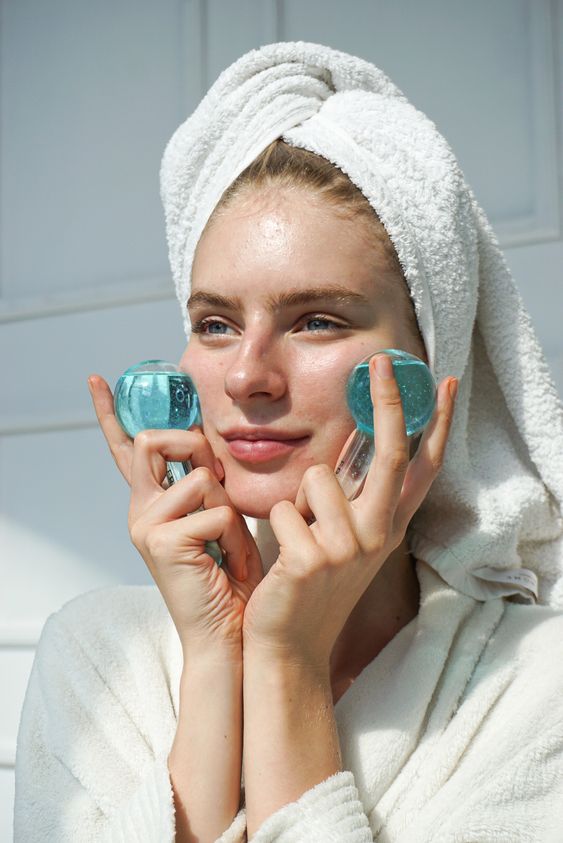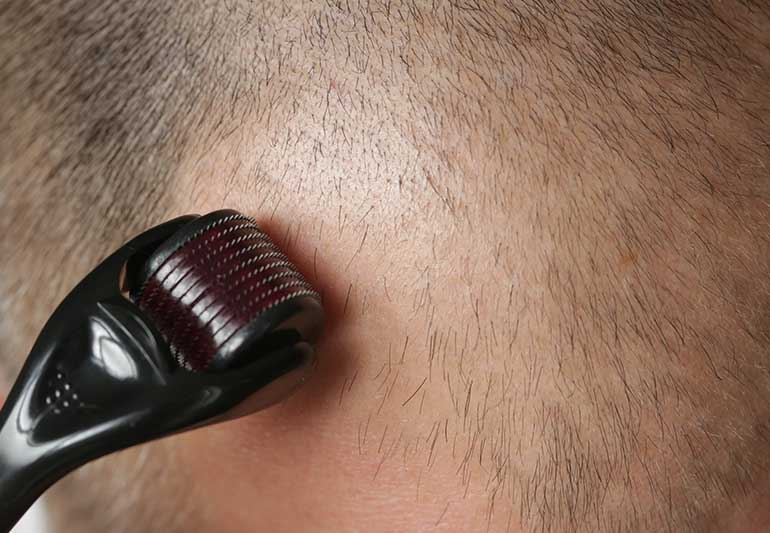Ice globes have become a hot trend in the skincare world, and for good reason! These refreshing tools offer a multitude of benefits, from combating puffiness and redness to stimulating circulation and reviving tired skin. But with so many options on the market, choosing the right ice globe can feel overwhelming.
This guide will be your one-stop shop for navigating the world of ice globes. We’ll unveil the top 10 ice globes, taking into account factors like material, design, effectiveness, and budget. Whether you’re a skincare newbie or a seasoned enthusiast, this list will help you find the perfect ice globe to elevate your routine and achieve a radiant, sculpted complexion.
OUR TOP PICKS
ANGELA CAGLIA SKINCARE GOLD CRYO FACIAL SET

Angela Caglia’s Gold Cryo Facial Set is a luxurious way to experience the benefits of ice globes at home. These fancy tools are plated in gold and filled with a special gel that gets icy cold when you freeze them. By gliding them over your face, you get a blast of coolness that helps reduce puffiness, minimize the look of wrinkles, and even boost your circulation. They’re designed to mimic the invigorating facials Angela Caglia gives to celebrities, so you can feel pampered while giving your skin a wake-up call. Although they are on the pricier side, they’re a popular choice for those who want a touch of glam in their skincare routine.
DERMSTORE COLLECTION ICE GLOBES (SET OF TWO)
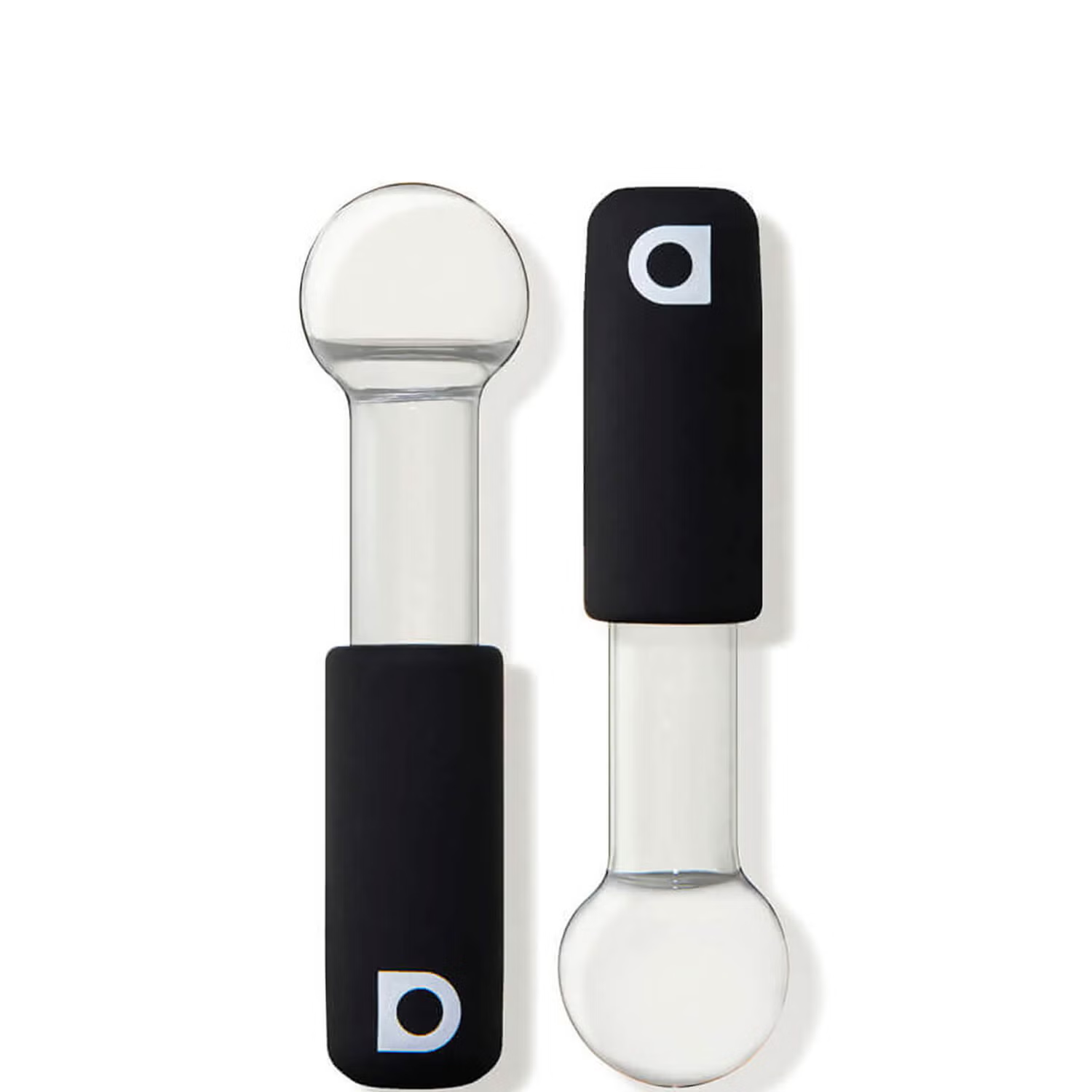
If you’re looking for a more affordable option to jumpstart your ice globe journey, the Dermstore Collection Ice Globes are a great pick. This no-frills set comes with two glass globes that you simply chill in the refrigerator or cold water. While they might not be as fancy as gold-plated options, they get the job done just as well. Simply roll the cool globes across your face to soothe puffiness, tighten pores, and wake up your skin. Plus, because they’re made from glass, they’re easy to clean and store. This is a perfect choice for those who want to experience the benefits of ice globes without breaking the bank.
SKIN GYM CHRONICLES PINK FACIAL ICE GLOBES
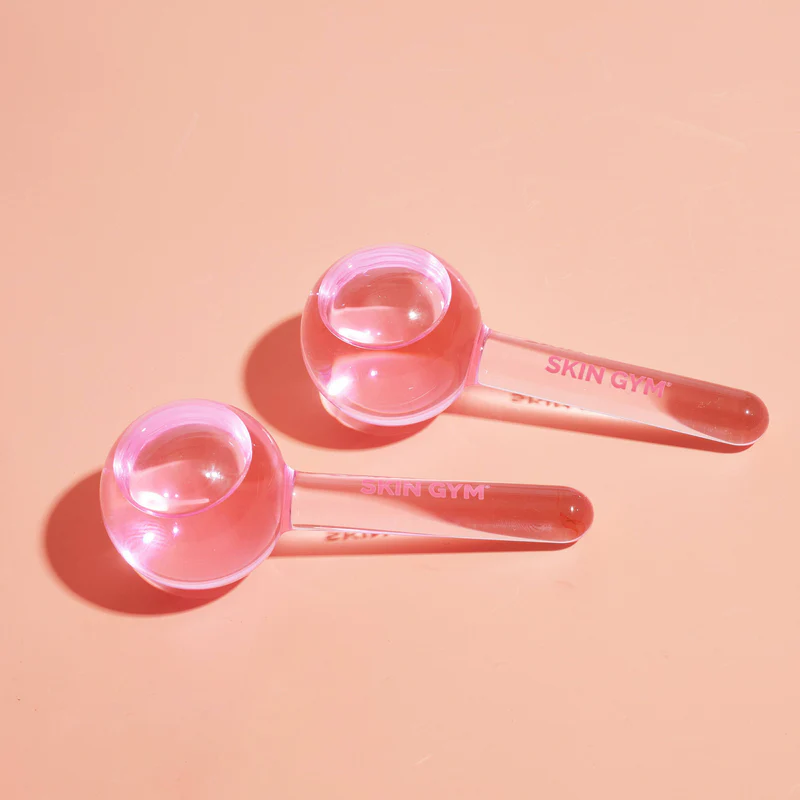
Calling all pink lovers! The Skin Gym Chronicles Pink Facial Ice Globes are a playful and effective way to add a touch of fun to your skincare routine. Made from hand-blown glass, these globes are filled with a cooling liquid that stays icy cold after a quick stint in the freezer. Glide them over your face to de-puff tired eyes, calm redness, and refresh your skin. They’re perfect for a quick pick-me-up in the morning or a soothing wind-down at night. Plus, the adorable pink color adds a pop of personality to your bathroom counter. With their cute design and focus on functionality, the Skin Gym Chronicles Pink Facial Ice Globes are a great choice for those who want to embrace the ice globe trend in style.
PLUM BEAUTY COOLING FACIAL TOOL SET
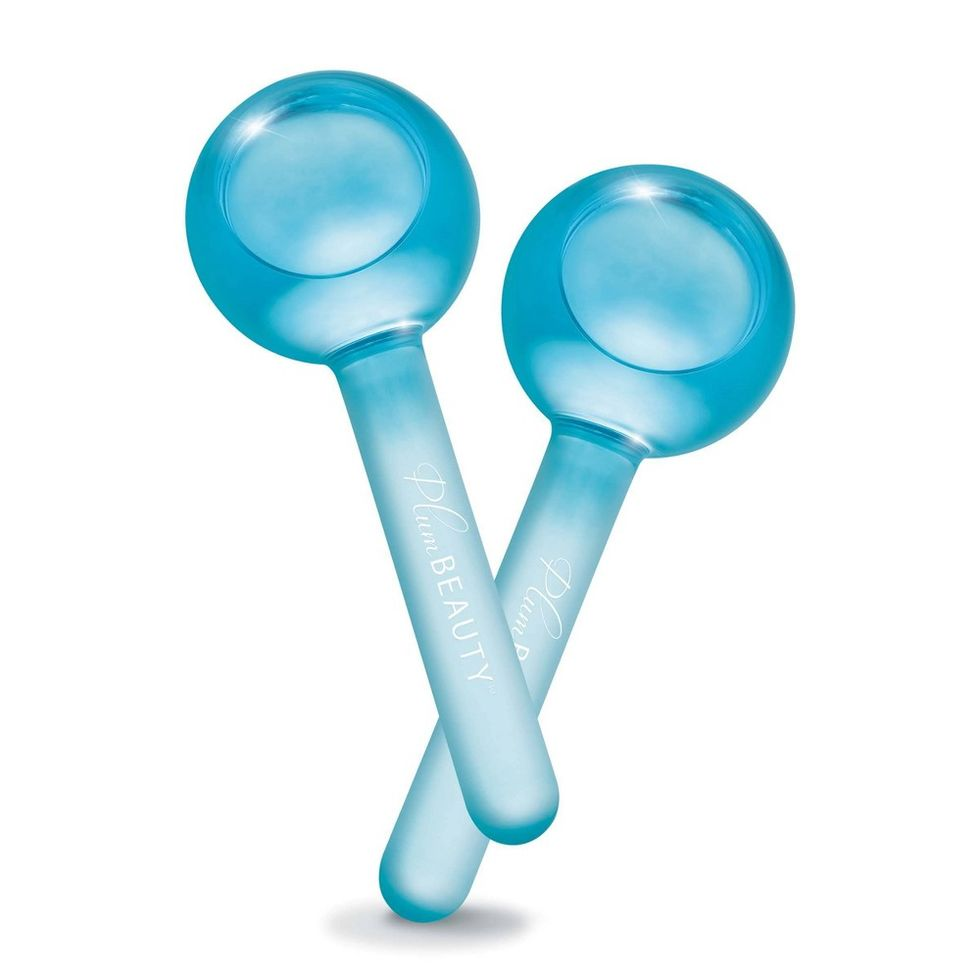
Looking for a budget-friendly and effective option? The Plum Beauty Cooling Facial Tool Set is a great choice. This simple set includes two glass globes that you chill in the fridge before using. While they might not have any fancy features, they’re perfect for getting started with ice globes. Glide the cool globes across your face to reduce puffiness, brighten your skin, and wake it up in the morning. Plus, since they’re made from glass, they’re easy to clean and store. This no-fuss set is a perfect option for those who want to experience the benefits of ice globes without spending a lot.
GEORGIA LOUISE CRYO FREEZE TOOLS
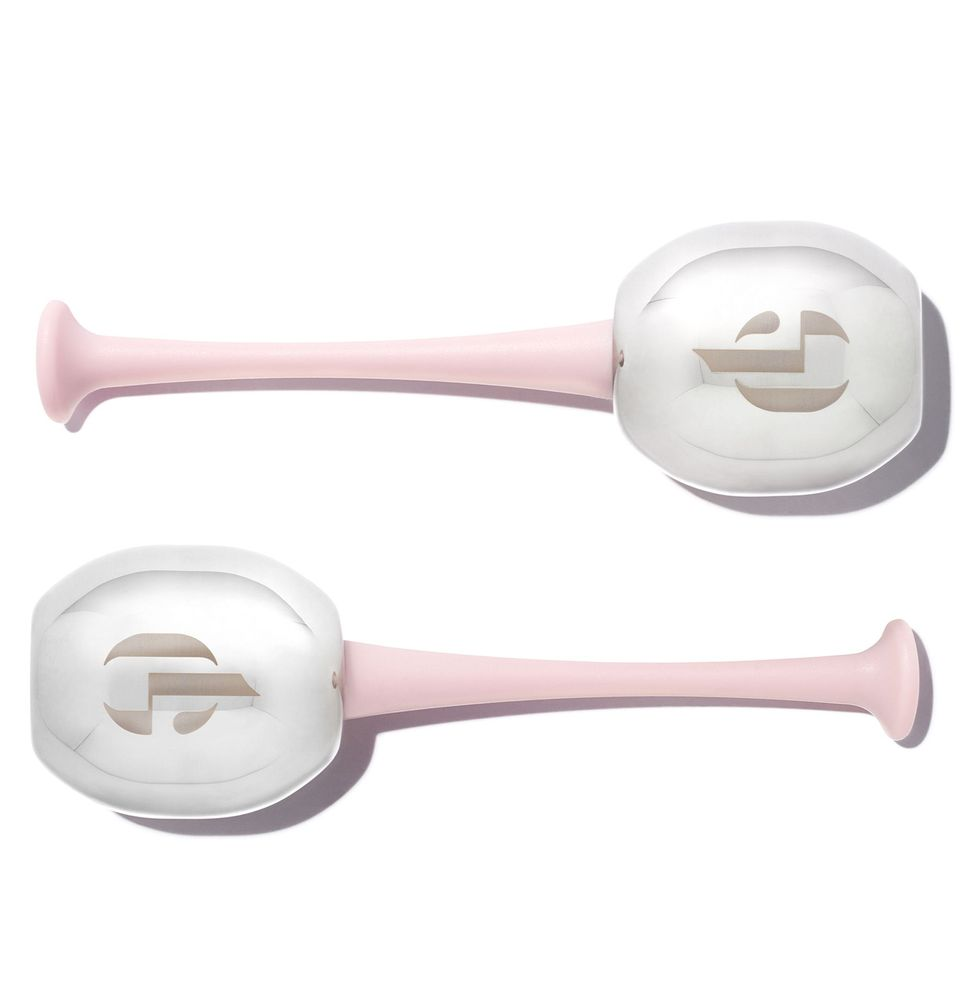
Known for their celebrity following, Georgia Louise Cryo Freeze Tools are a popular choice for those who want salon-worthy results at home. Made from stainless steel, these globes stay icy cold for longer compared to glass options. This allows for a more intense cooling effect, which can be helpful for reducing puffiness and tightening the appearance of pores. While they come at a higher price point, the Georgia Louise Cryo Freeze Tools are a favorite among those who prioritize effectiveness and a luxurious feel. Plus, the brand offers a Master Class online to teach you how to use them for the best results, making them a great option for those who want to get the most out of their ice globe experience.
JENNY PATINKIN CRYO GLOW GLOBES
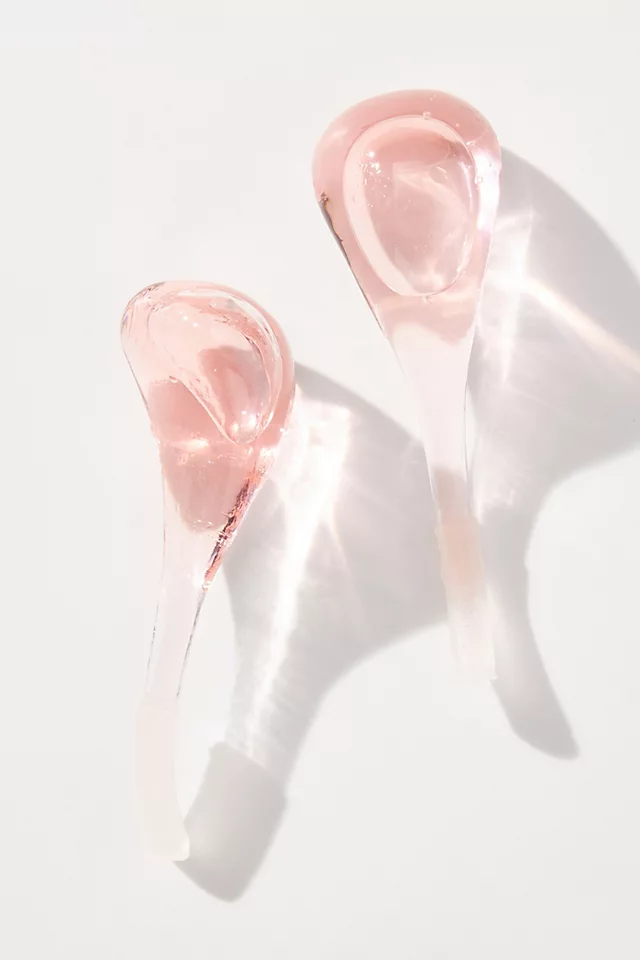
If you’re looking for ice globes designed with comfort in mind, Jenny Patinkin Cryo Glow Globes are a great choice. These globes are known for their unique curved shape that hugs the contours of your face. This special design allows you to easily massage around your eyes and other sensitive areas without any irritation. Filled with a non-toxic, plant-based cryo essence, they get icy cold when frozen, helping to de-puff, soothe, and brighten your skin. While they may not be the cheapest option, Jenny Patinkin Cryo Glow Globes are a favorite for those who prioritize a comfortable and effective facial massage experience.
PFEFE ICE GLOBES FACIAL SKIN CARE TOOLS
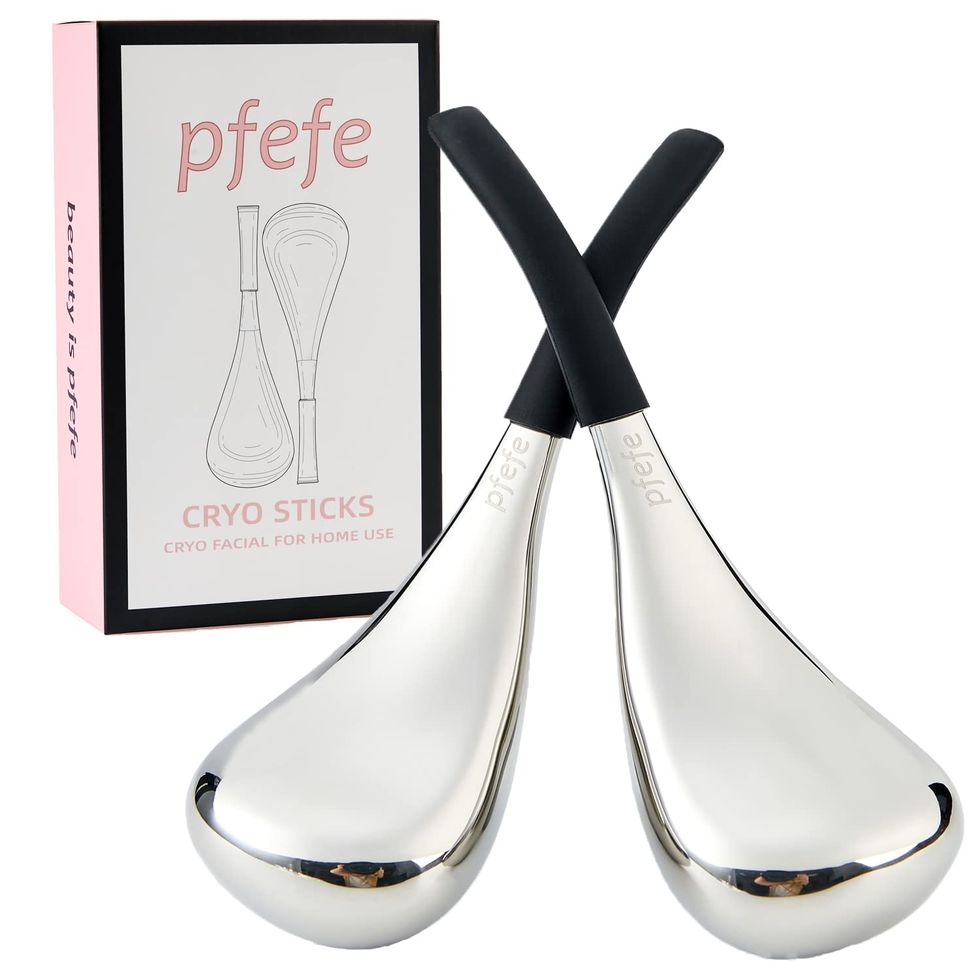
Pfefe Ice Globes are another strong contender in the world of facial ice globes. They offer a balance between affordability and features. Made from stainless steel, these globes stay chilled for a good amount of time, similar to Georgia Louise’s pricier option. The filling is a non-toxic cooling gel, making them safe for use on your skin. Plus, Pfefe offers their globes in a sleek gold finish, adding a touch of luxury without the hefty price tag. They come with a storage case for easy hygiene and keeping them protected. If you’re looking for effective ice globes that are both functional and stylish, Pfefe is a great choice to consider.
PACIFICA CHILL BABY ICE GLOBES

Pacifica Chill Baby Ice Globes are a great choice for skincare enthusiasts on a budget. This set includes two glass globes, one small and one large, perfect for targeting different areas of your face. Simply pop them in the fridge or cool water to get them nice and chilly. Glide them over your face to reduce puffiness, minimize the appearance of pores, and even boost your circulation. Made entirely of vegan and cruelty-free materials, Pacifica Chill Baby Ice Globes are a gentle and effective way to add a touch of coolness to your skincare routine at an affordable price.
CHILLHOUSE CHILL GLOBES

The Chillhouse Chill Globes are the original ice globes that started the whole trend! This classic set is made from stainless steel, so they stay nice and cold for a longer time compared to glass options. This allows for a more intense cooling effect, which can help reduce puffiness and tighten the appearance of pores. While they aren’t the cheapest, Chillhouse Chill Globes are a popular choice because they’re known for their quality and effectiveness. They’re a great option for those who want to experience the original ice globes and enjoy the benefits of a longer-lasting chill.
SIO BEAUTY CRY DROP

Unlike other ice globes, the SiO Beauty Cryo Drop takes a unique approach. It’s a single, silicone tool that conforms to the shape of your face. Filled with a cooling liquid, it gets icy cold after a quick freeze. Glide it across your face to de-puff, soothe irritation, and even stimulate circulation. The silicone design is comfortable to hold and easy to clean, making it a hygienic choice. While it doesn’t have the double-globe action of some other options, the Cryo Drop’s unique shape allows you to target specific areas and get a close fit for maximum coldness. If you’re looking for a single, portable ice globe that’s easy to use and clean, the SiO Beauty Cryo Drop is a great choice to consider.
HOW ICE GLOBES WORK?
Ice globes, also known as ice rollers or ice facial massagers, work primarily through cold therapy and massage techniques. Here’s how they typically work:
Cold Therapy: Ice globes are made of glass or plastic filled with a gel or liquid that can be frozen. When applied to the skin, the cold temperature constricts blood vessels and reduces blood flow to the area. This can help to:
Reduce Puffiness: Cold therapy can shrink blood vessels and reduce swelling and inflammation, particularly under the eyes and on the cheeks.
Tighten Skin: The cold can temporarily tighten the skin, giving it a smoother appearance.
Soothe Irritation: It can calm irritated skin, especially after procedures like facials or microdermabrasion.
Massage Effect: The globes are typically rolled or massaged over the skin. This gentle massage:
Stimulates Circulation: The rolling action can promote blood circulation, which can bring more oxygen to the skin cells and help with cell regeneration.
Enhances Product Absorption: Massaging the skin can help skincare products penetrate more deeply, enhancing their effectiveness.
Relax Facial Muscles: Massaging with ice globes can relax facial muscles, reducing tension and potentially minimizing the appearance of fine lines and wrinkles temporarily.
Overall Benefits: Regular use of ice globes can contribute to a more toned and refreshed complexion over time. They are often used in skincare routines, particularly in spas and by individuals looking to enhance their skincare regimen at home.
HOW SHOULD YOU USE THE BEST ICE GLOBES?
The first step to using ice globes is ensuring they reach their optimal chilly temperature. Celebrity esthetician Ian Michael Crumm suggests storing them in the refrigerator or a bowl of cold water or ice before use. It’s important to read your device’s instructions, as not all ice globes and cryo sticks can be frozen or stored the same way.
Before using the globes on your freshly cleansed skin, you may want to apply skincare products like facial oil, essence, serum, or moisturizer. While it’s not strictly necessary to use a skincare product with an ice globe, doing so can enhance the benefits and provide a smooth glide over the skin, preventing unwanted friction.
To use the globes, gently glide them over your face, starting from the center and moving outwards with upward strokes for the best effect. Focus on areas that need de-puffing, such as under the eyes or any other areas prone to puffiness or inflammation.
Ice globes can be used in various ways, and brands usually provide detailed tutorials on how to use each specific device during a facial massage. If you’re unsure whether to use an ice globe, consult a board-certified dermatologist. Those with sensitive skin should be cautious, and individuals with active breakouts should minimize any trauma to the skin.
HOW SHOULD ICE GLOBES BE STORED?
To prevent product buildup and bacteria growth, it’s important to clean and dry your ice globes after each use before storing them. “The best way to store ice globes is in the refrigerator,” says Crumm. “This keeps them cold and ready for use at any time.”
Additionally, some ice globes come with storage cases or pouches. To maintain your tools in the best condition, follow the storage instructions provided by the brand.
CONCLUSION
That concludes our exploration of the top 10 ice balls for your face! From luxurious gold-plated options to budget-friendly glass sets, there’s a perfect ice ball for everyone. We’ve covered a variety of materials, designs, and features to help you find the one that best suits your needs and preferences. Remember, consistency is key! The more you use ice balls, the more you will experience the amazing benefits they bring. Besides being useful for yourself, it can also be a meaningful birthday gift, mother’s day gifts, etc. Both meaningful and practical, right? Brilliant congratulations!

